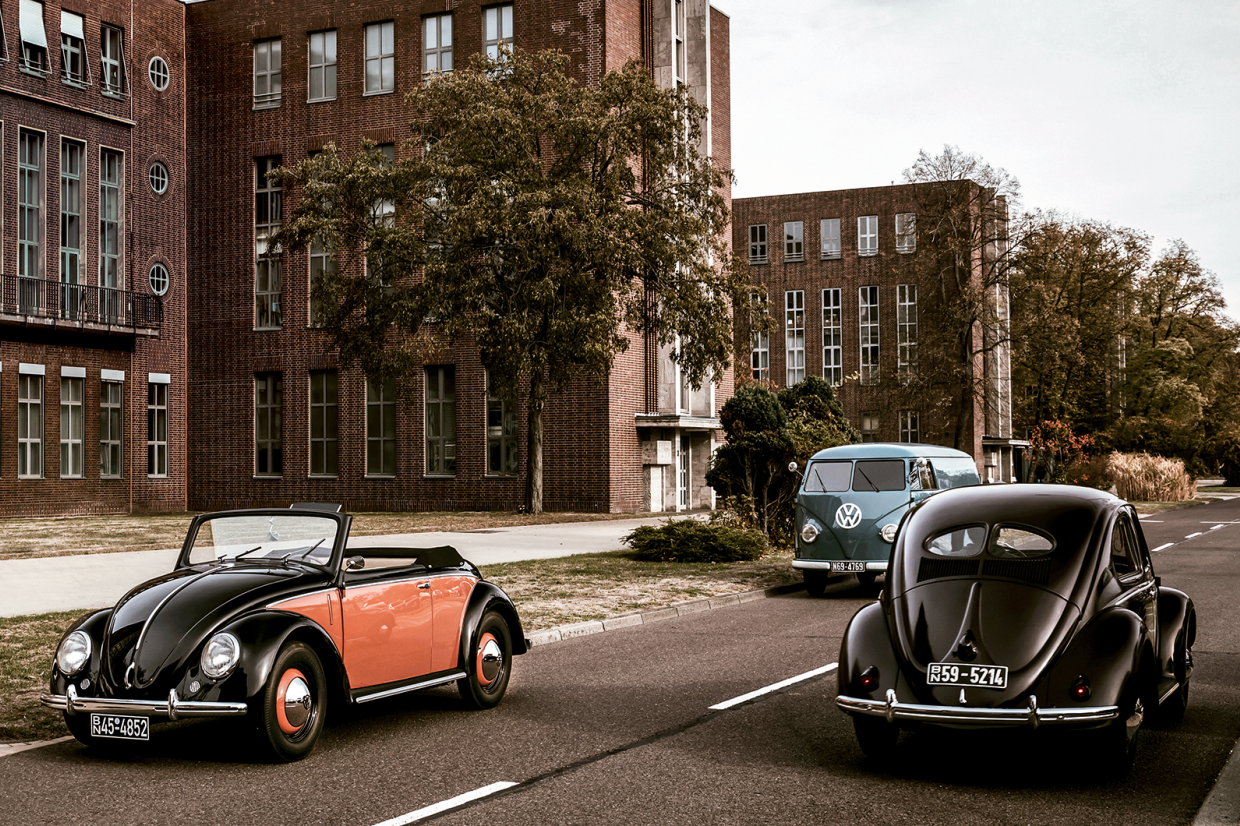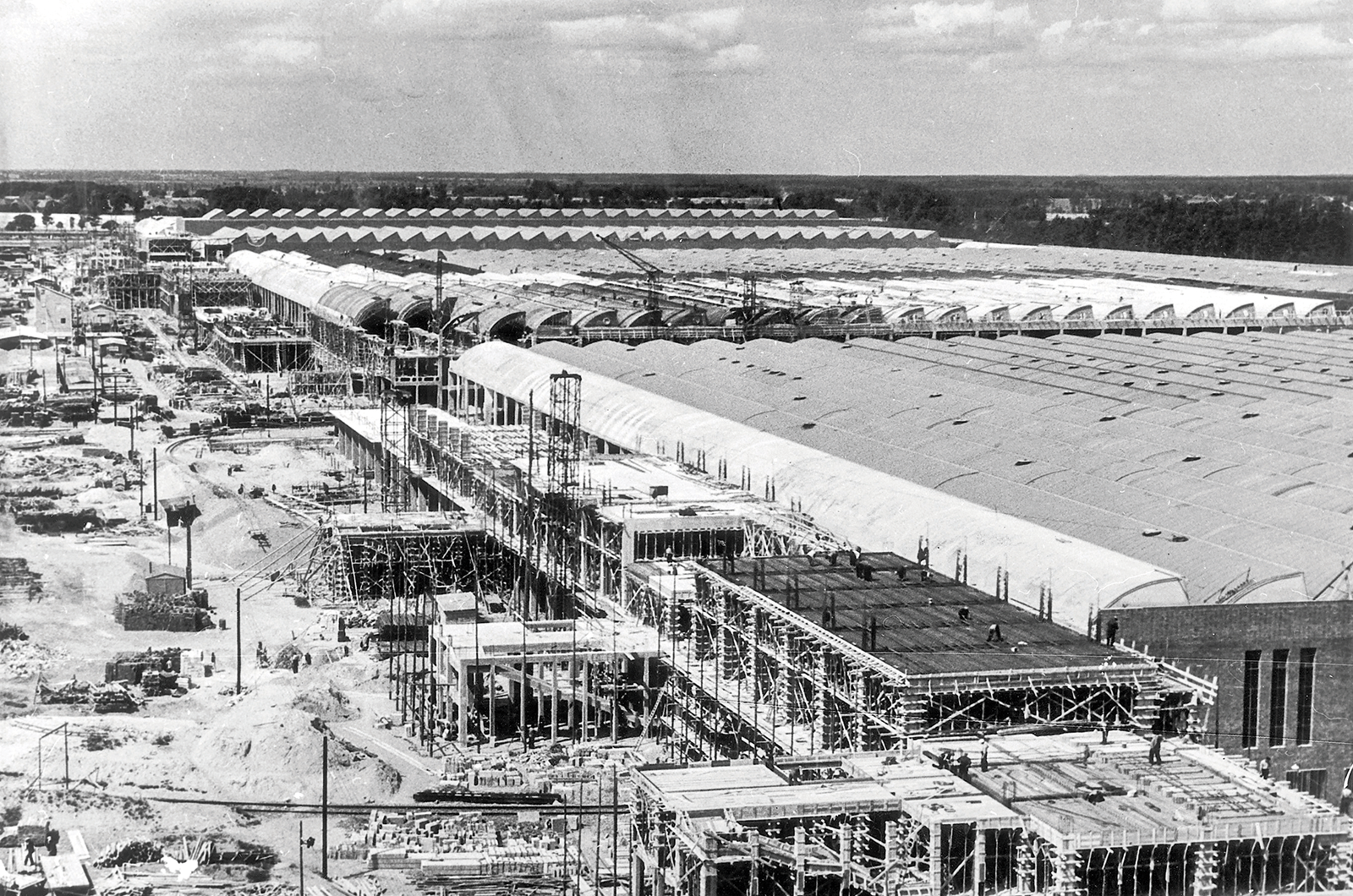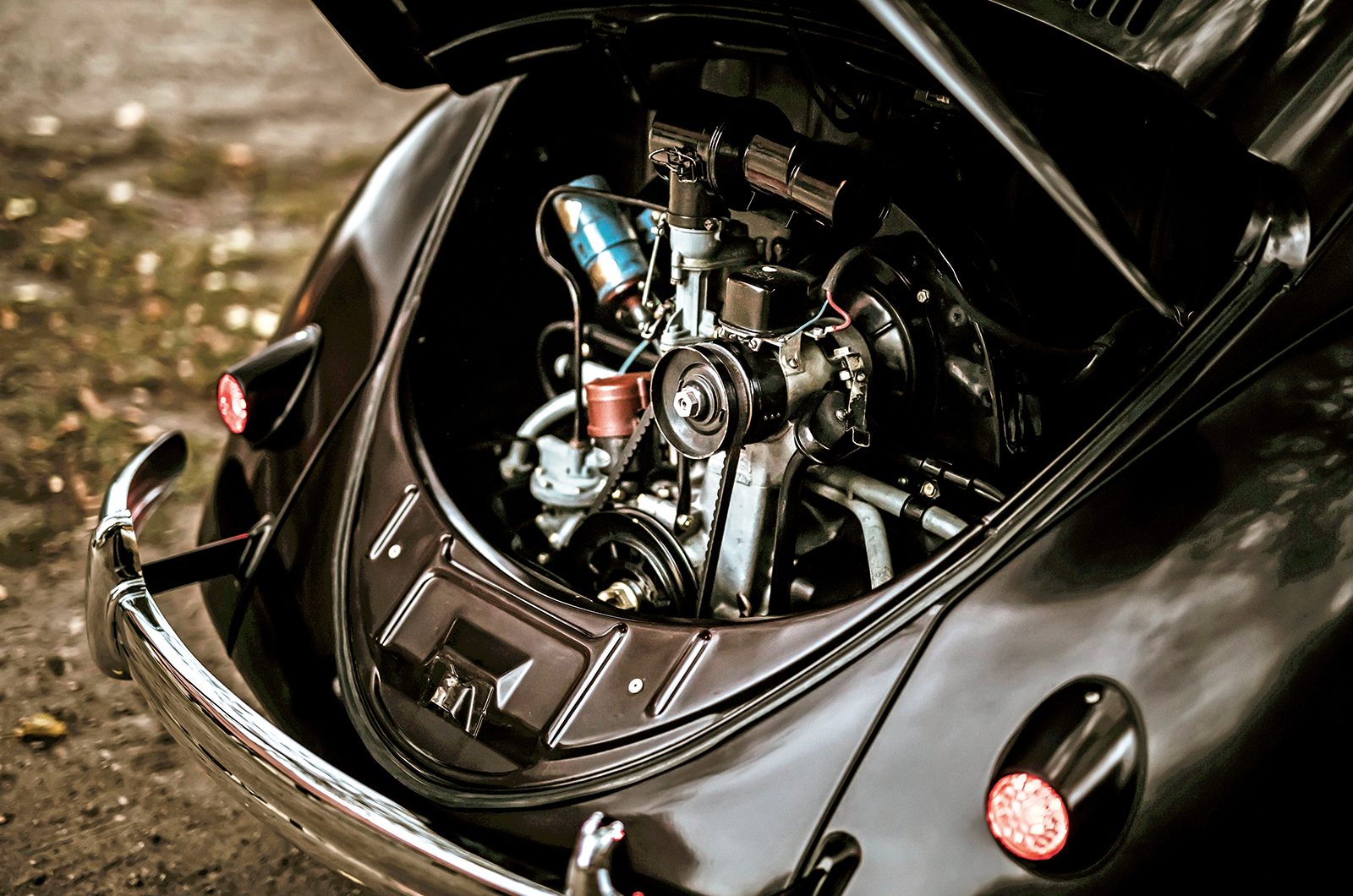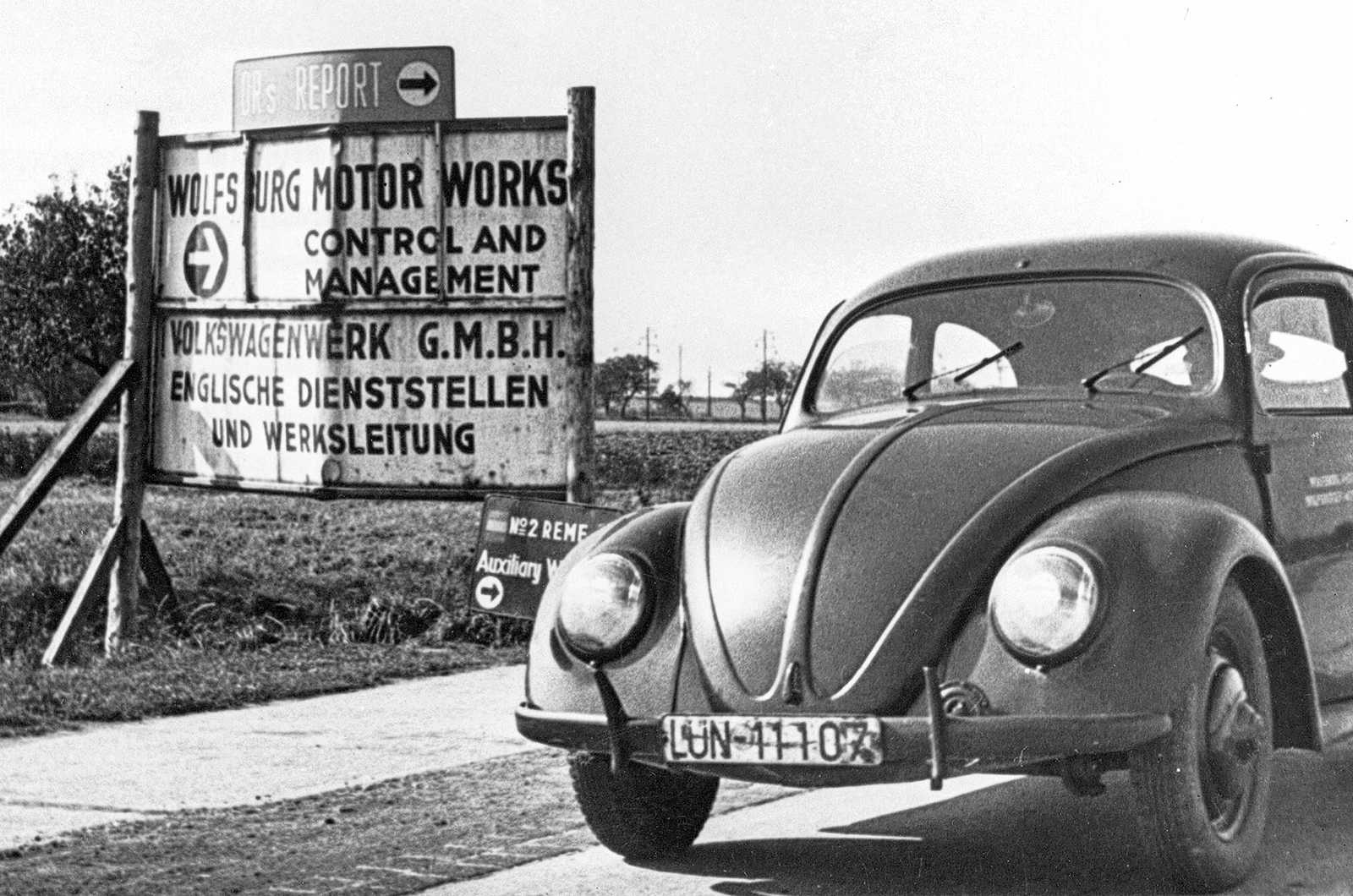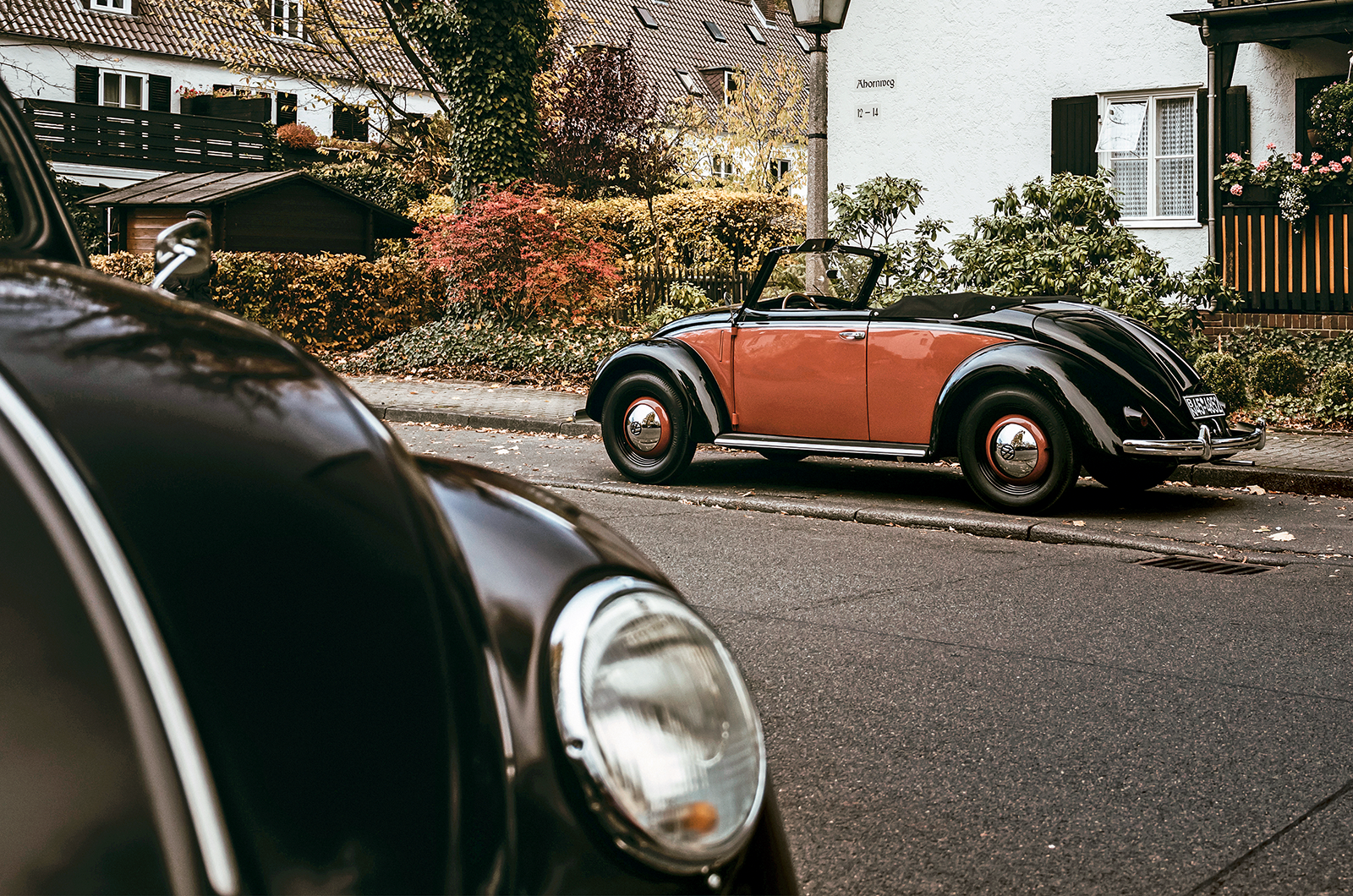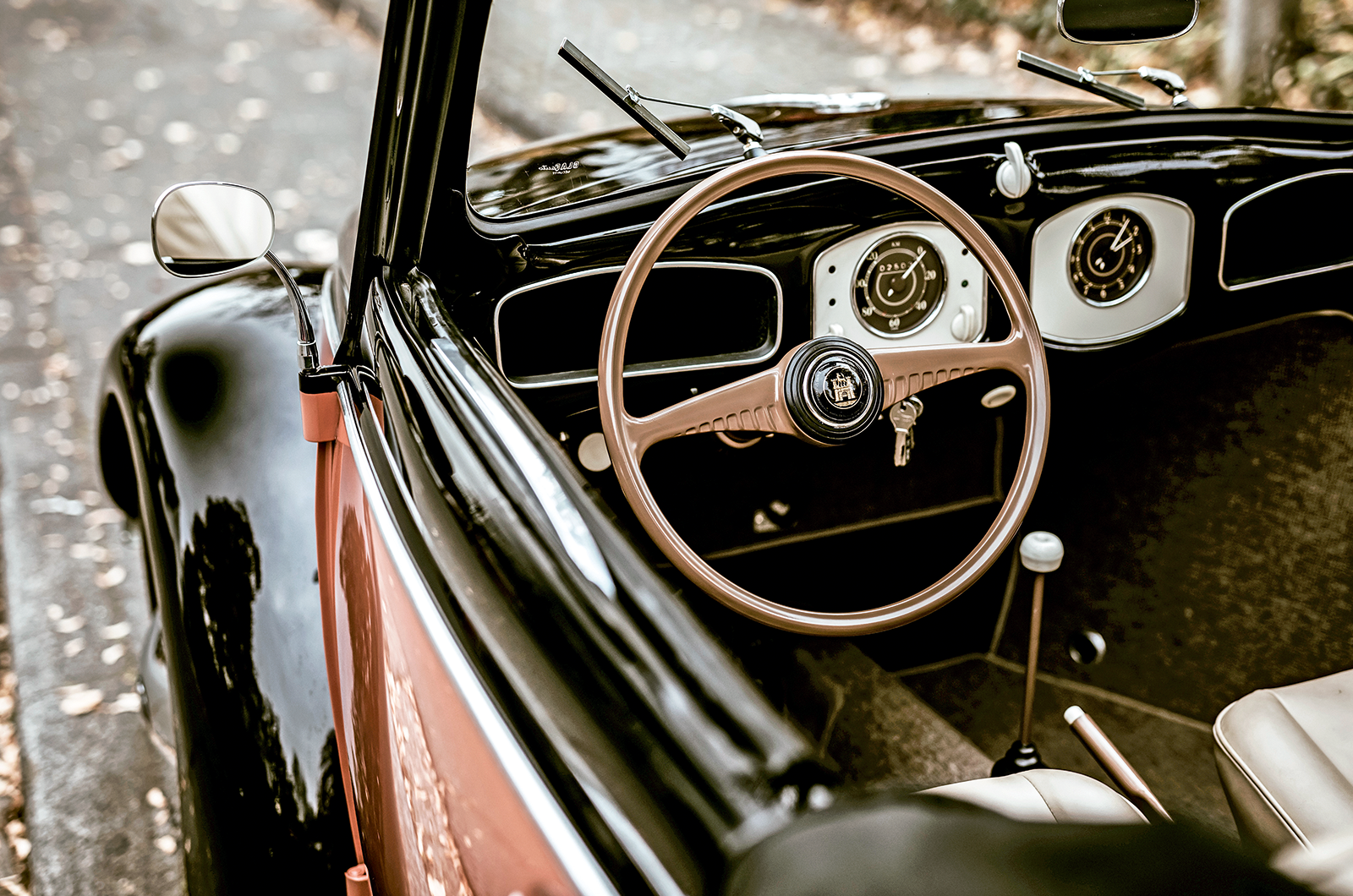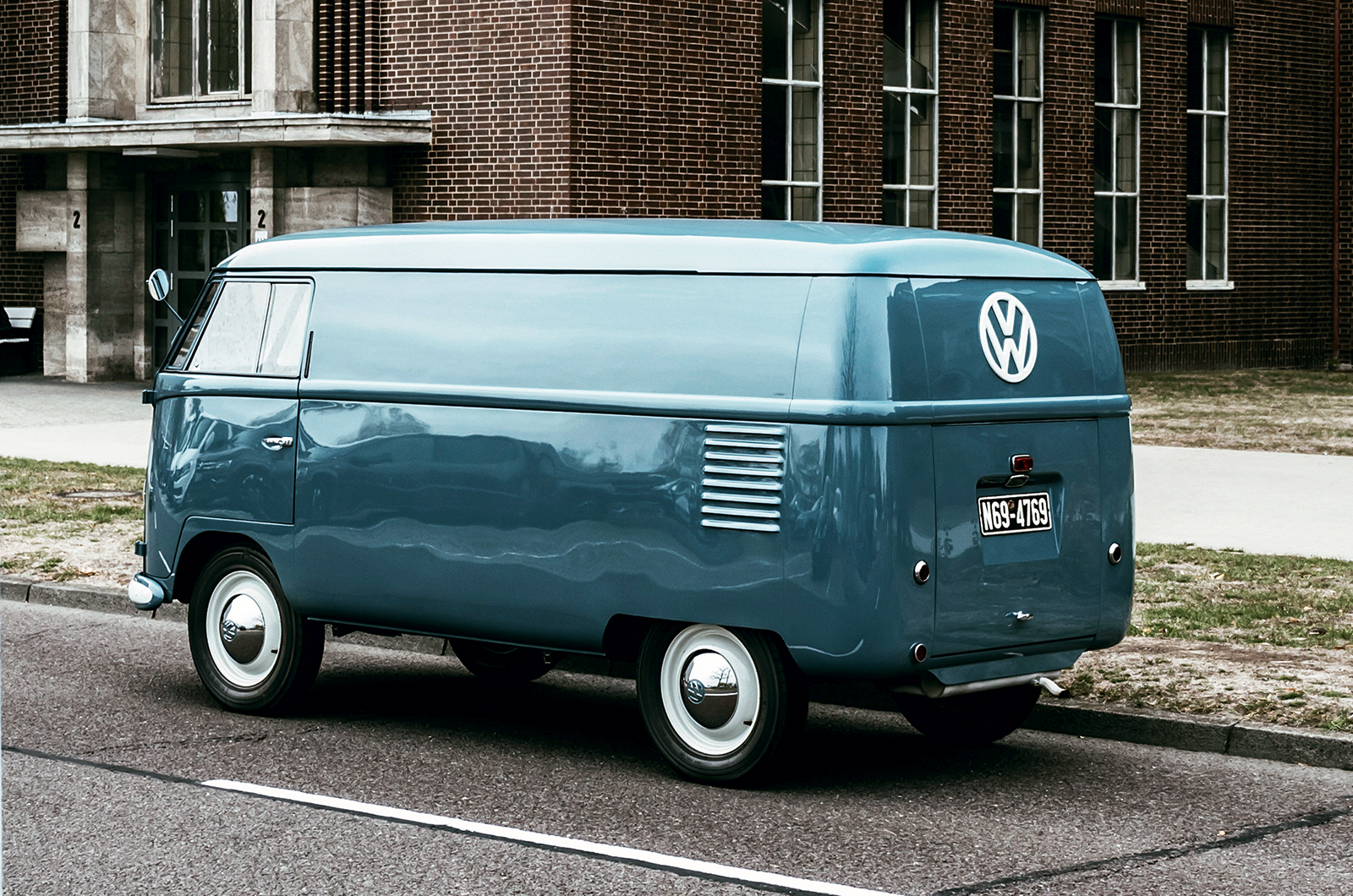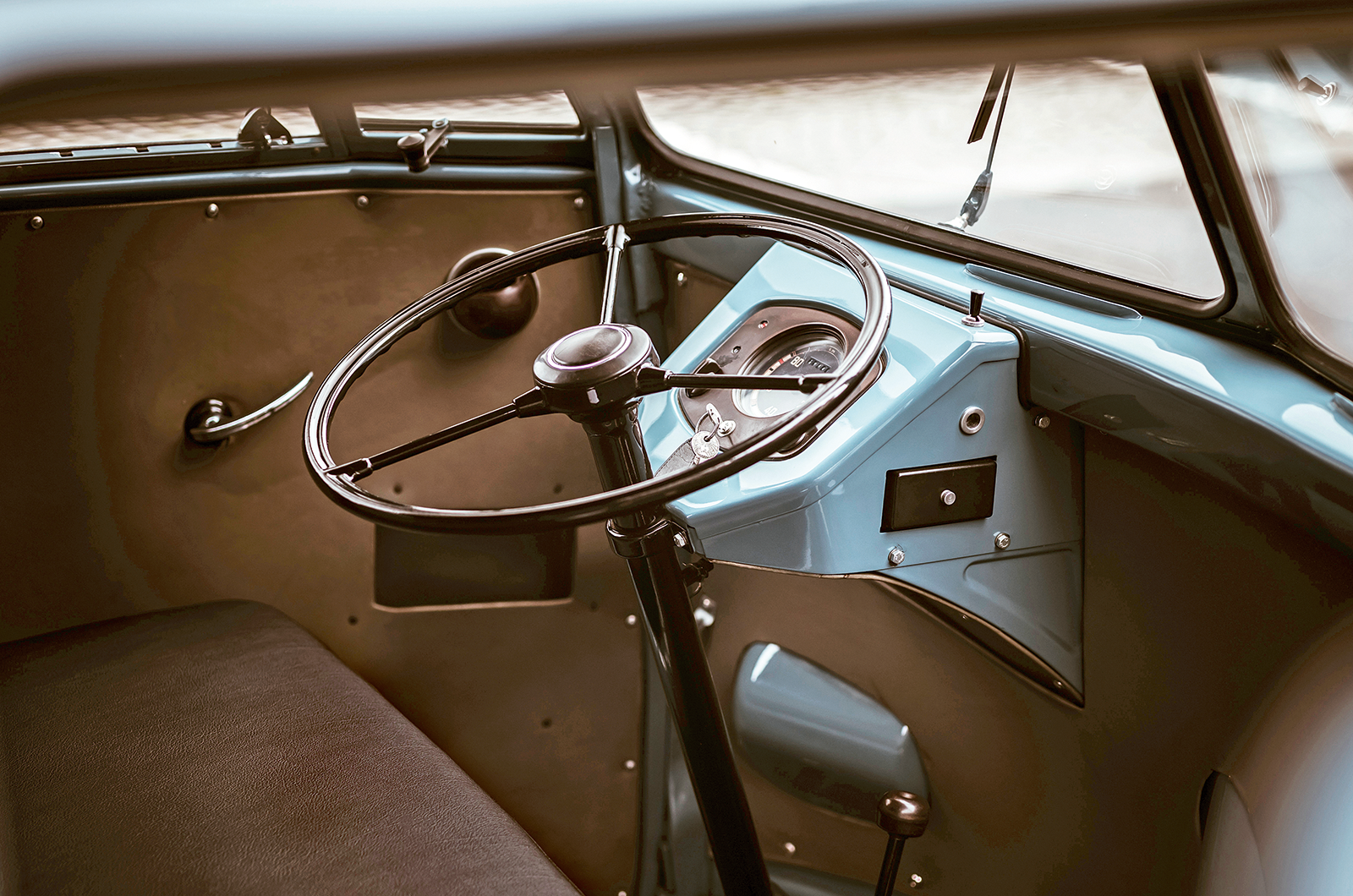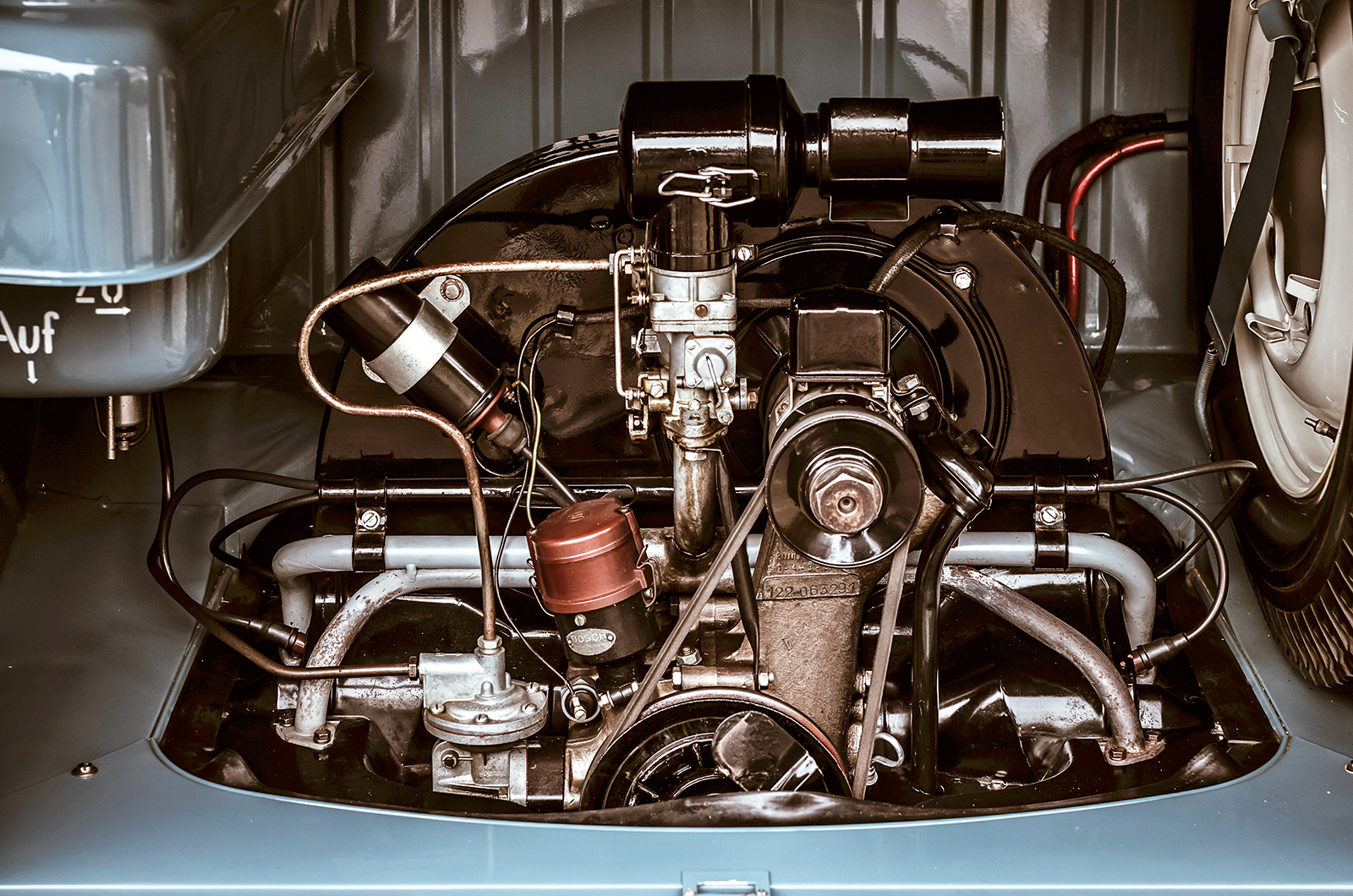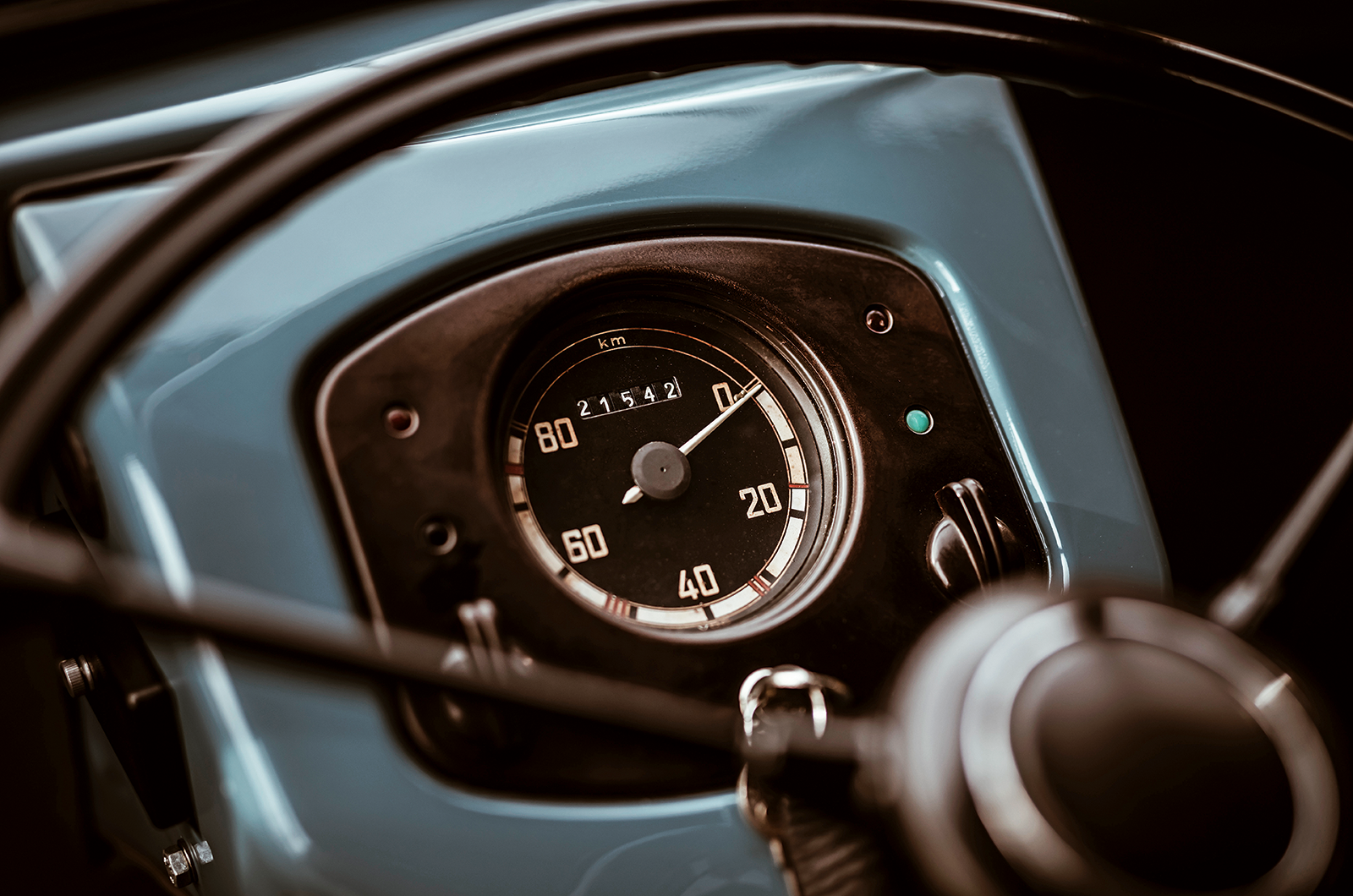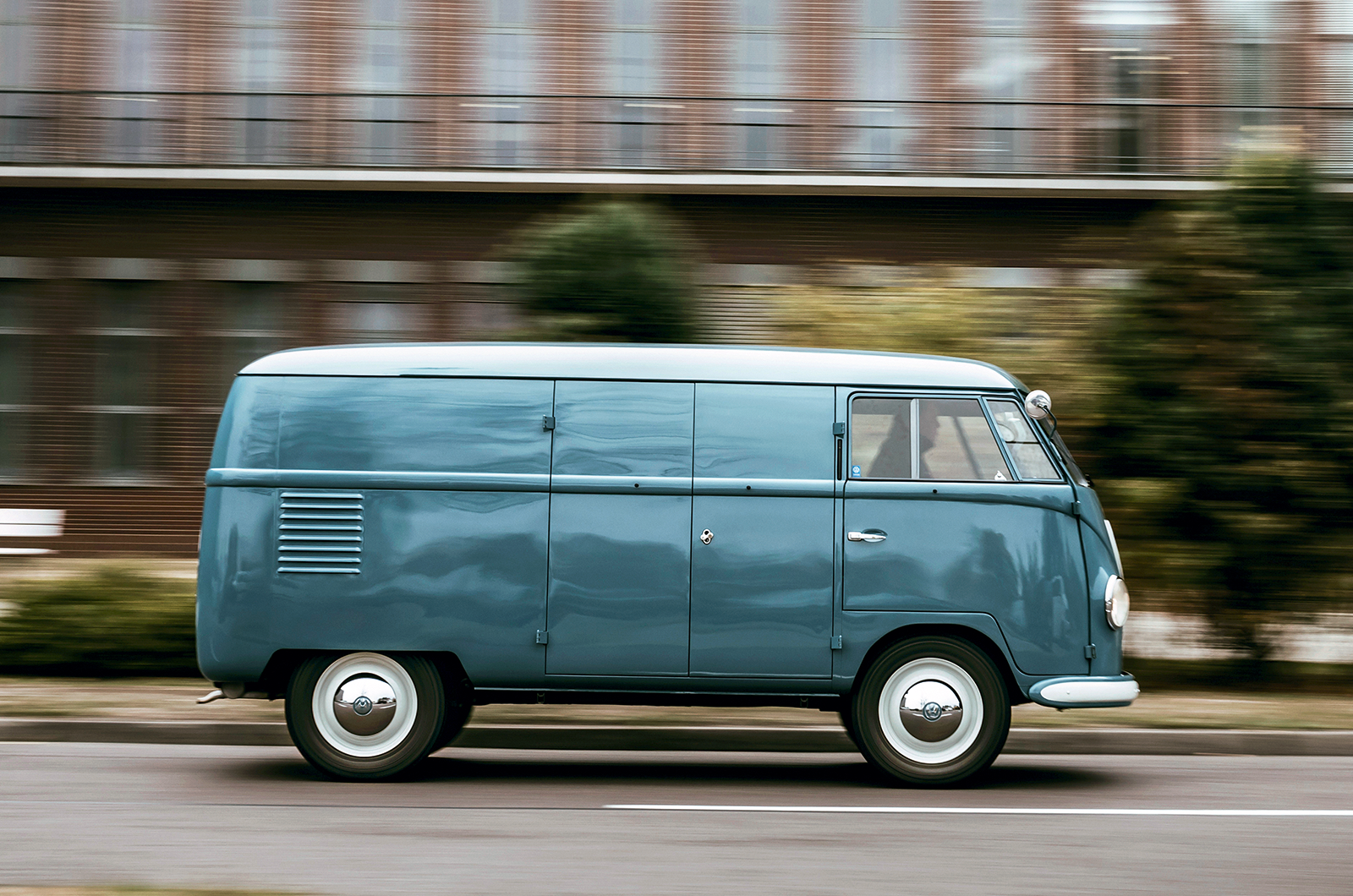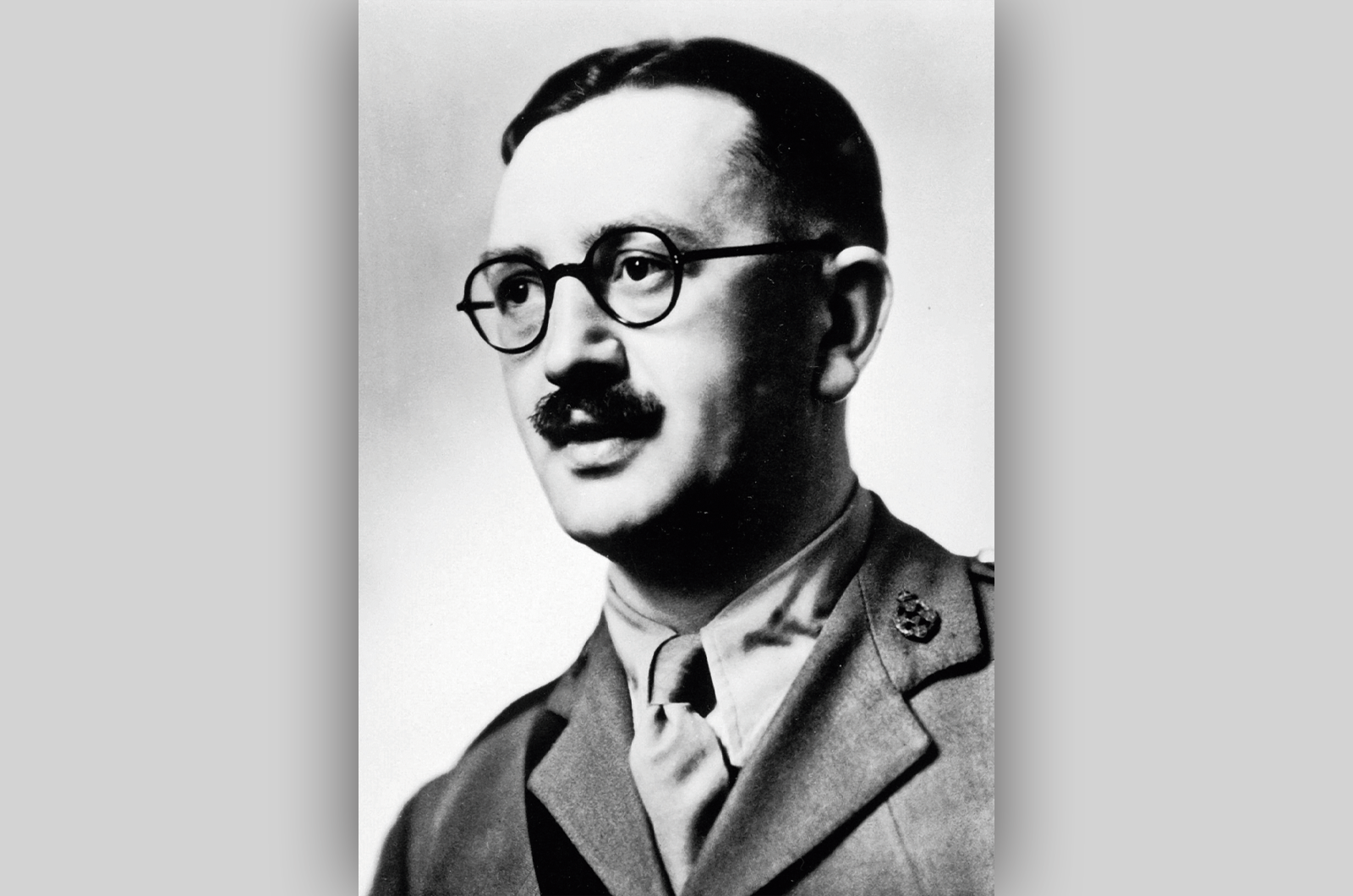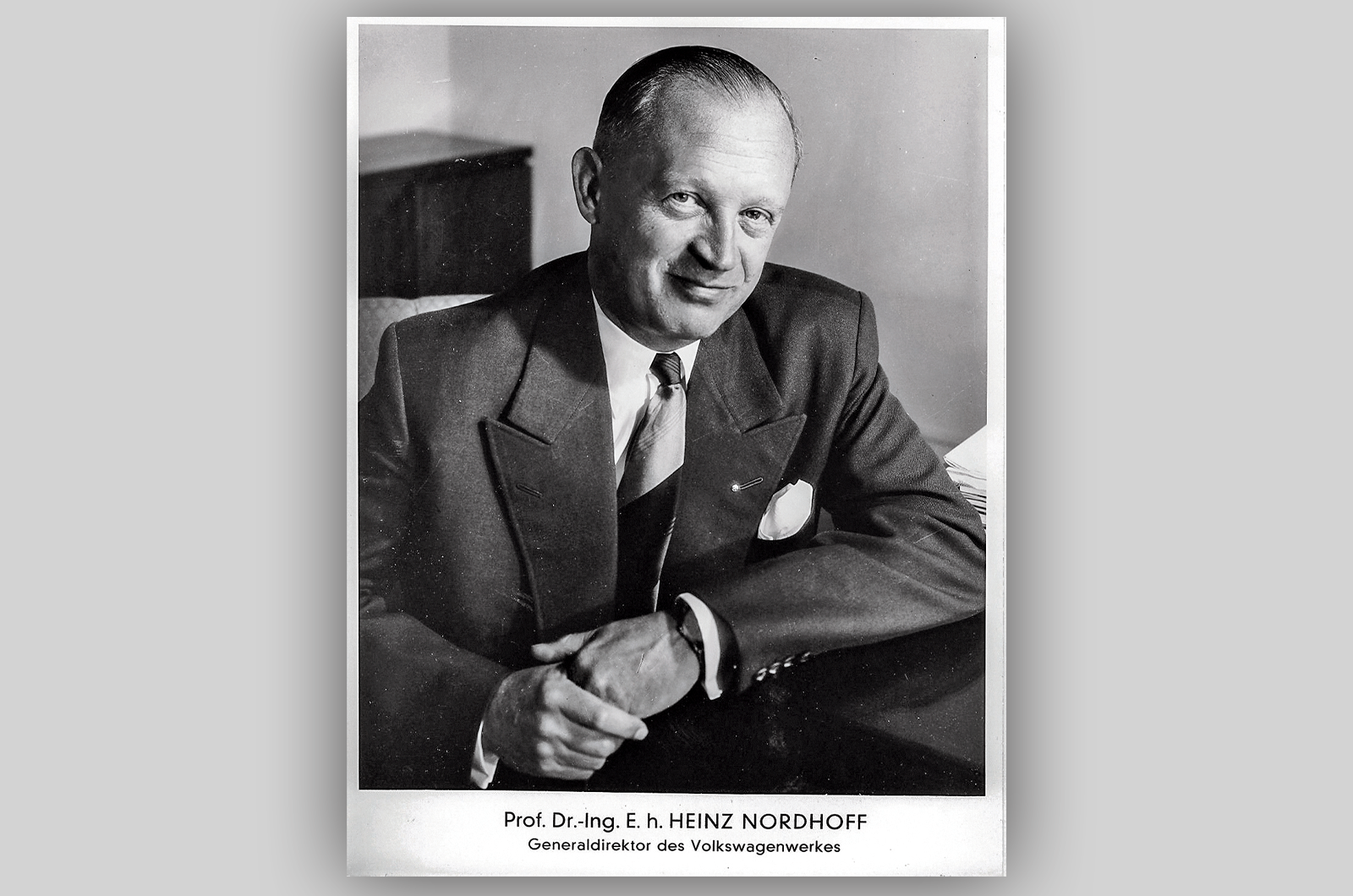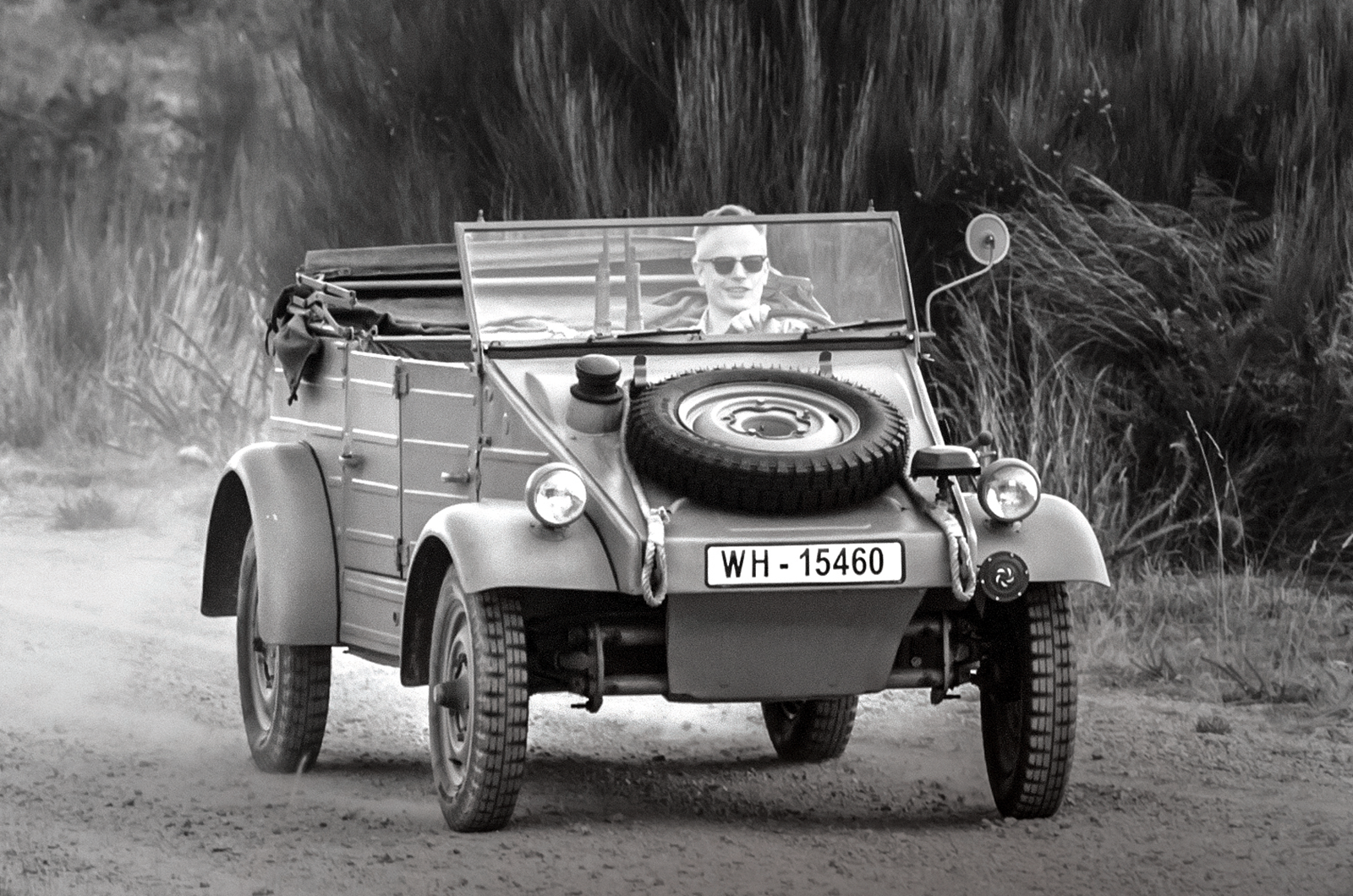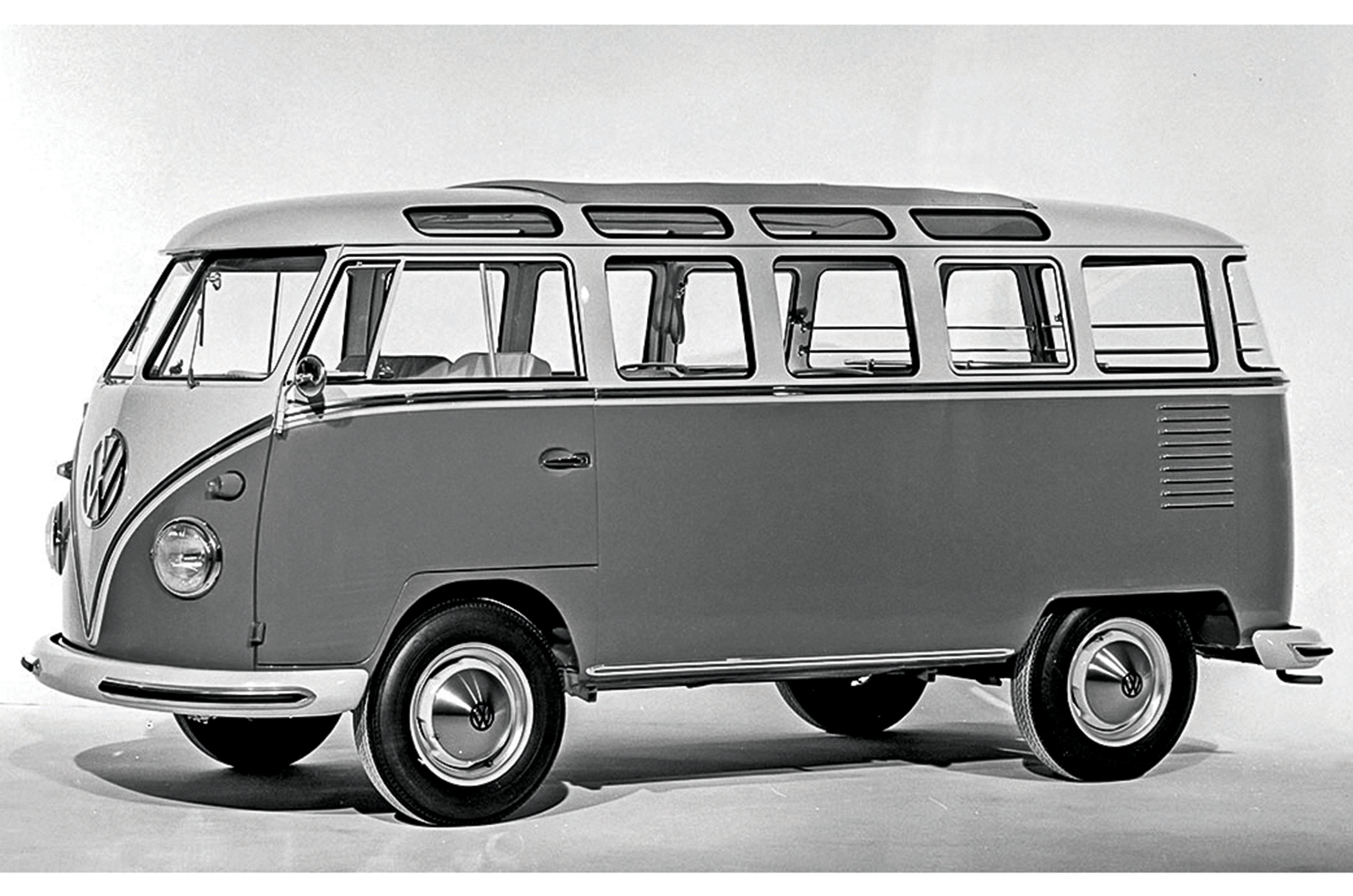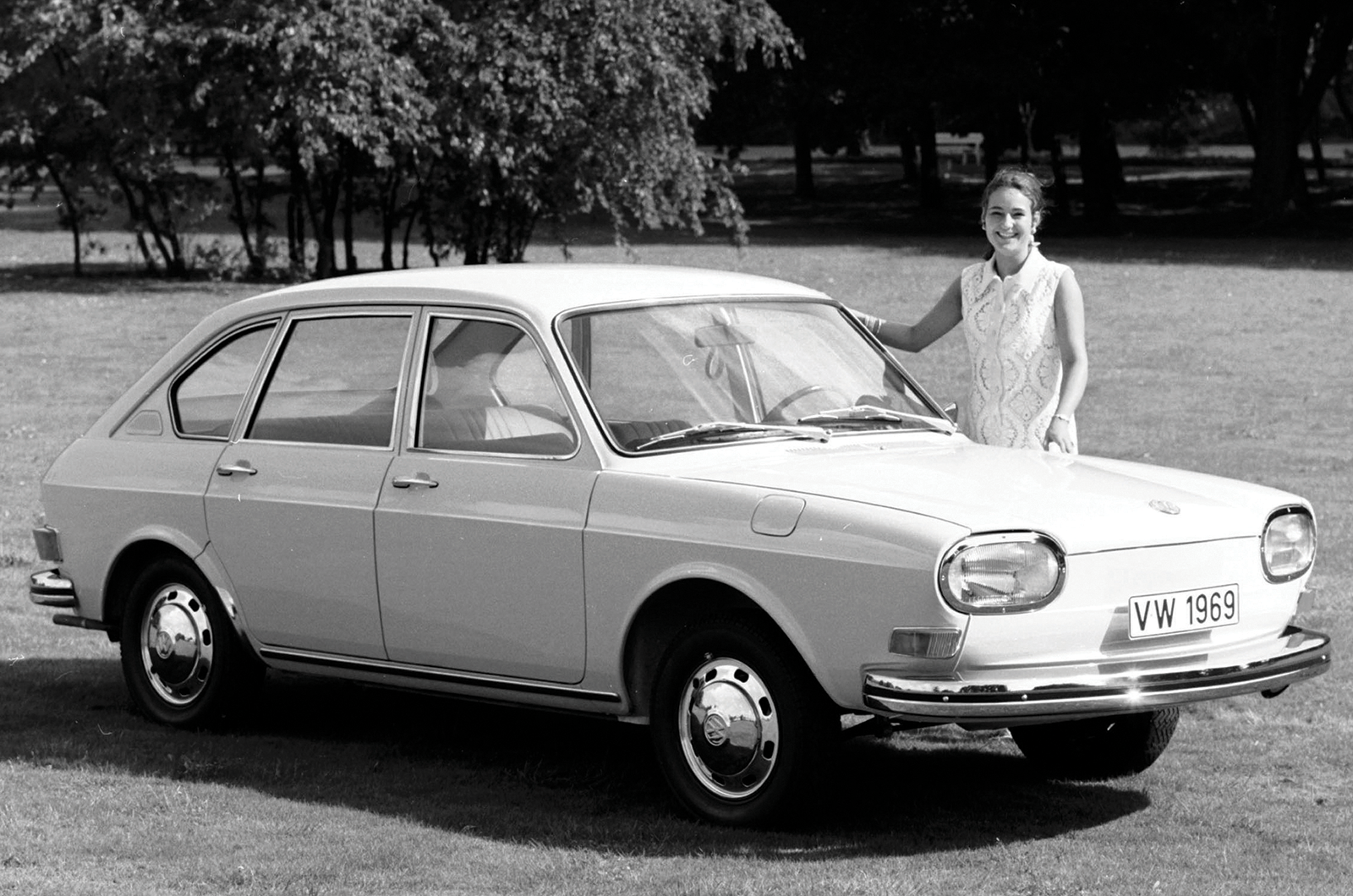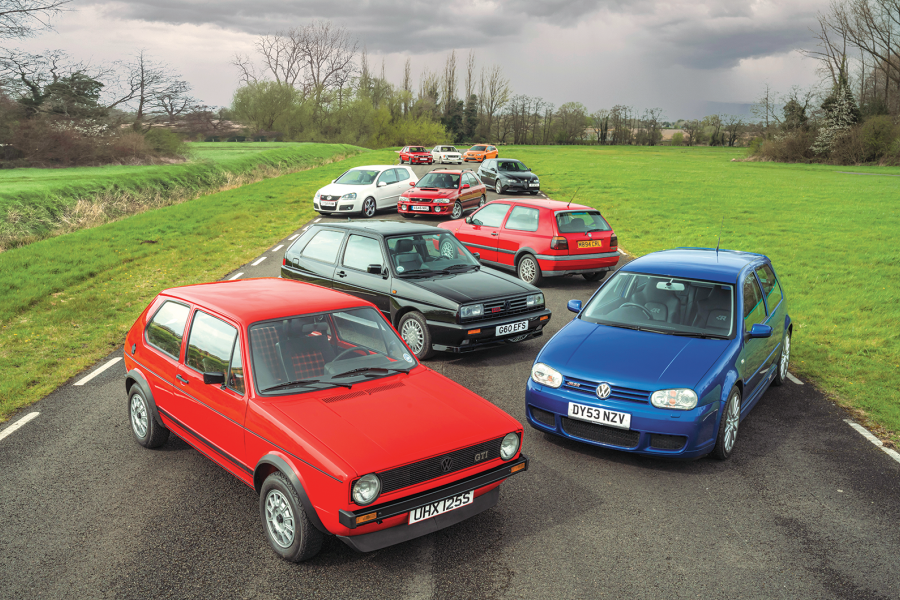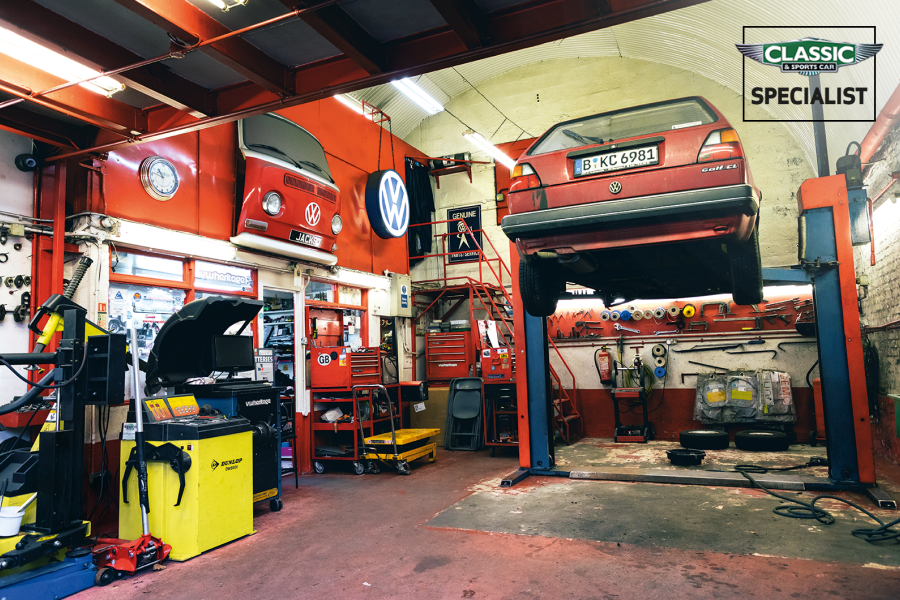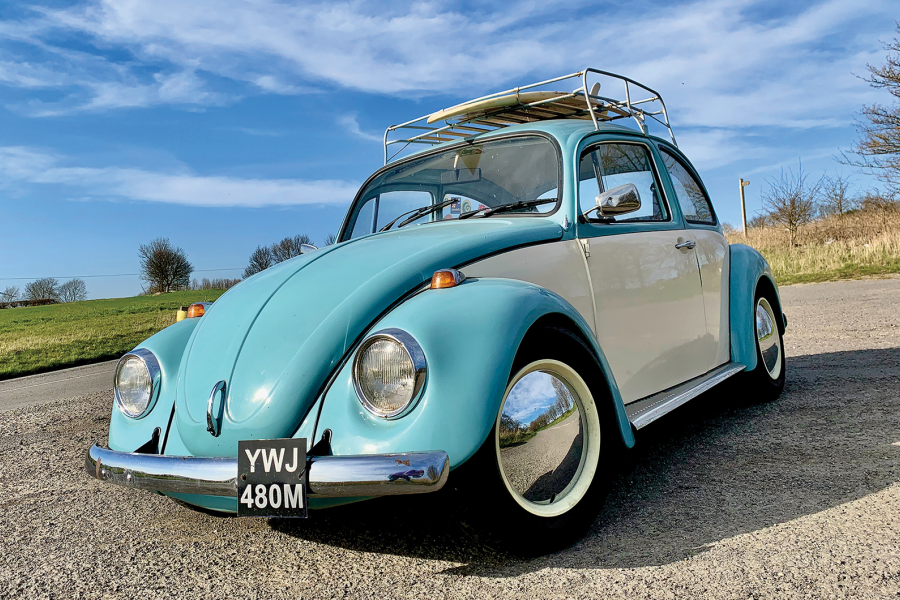Major Ivan Hirst remains a legend in the history of the automobile in Germany, as the true saviour of Volkswagen.
Having arrived at the Wolfsburg plant in August 1945, Hirst was appointed British Senior Resident Officer of the Control Commission.
He prevented the planned dismantling of the Volkswagen plant by securing new orders from the British government, and the reserved but resolute officer started series production on 27 December 1945.
A technology-loving engineer, Hirst ensured the quality of the vehicles and organised the establishment of a dealer and service network. He also ordered works council elections for the first time.
In 1947, the British permitted exports from the plant, with the first shipment going to The Netherlands.
As the years went by and operations continued in earnest, the British military took a step back and gave civilian managers greater responsibility.
Hirst recommended former Opel manager Heinrich Nordhoff as the man to take over as general director before leaving the Wolfsburg plant in 1949, but remained in Germany as part of the foreign office.
He later went on to serve in the Organisation for European Economic Co-operation until his retirement in 1976.
Major Hirst died on 10 March 2000 at the age of 84.
Heinrich Nordhoff – General Director
After being shunned by Opel, Heinrich Nordhoff was appointed general manager at VW in 1948 © Volkswagen AG
Although exonerated in the denazification process, as a former military economist commended by the Nazi regime Nordhoff was barred by the Americans from returning to his work at Opel, where he had been commercial/technical director.
The British team at VW was more accommodating and appointed him as general manager of Volkswagenwerk GmbH on 1 January 1948, on the recommendation of Major Ivan Hirst.
Nordhoff realised that exports were crucial, so led a programme to develop the Beetle. “The Volkswagen has more flaws than a dog,” he said, and began improving the car with his technicians.
In 1953 there was a synchronised gearbox, then the famous ‘pretzel’ rear window was replaced by a single pane.
Management was also streamlined, making cost savings that allowed repeated price reductions: in 1949 the Beetle cost 5050 marks, but by ’55 it was down to 3750.
After 12 years, the VW plant had become the largest in Europe and Nordoff was soon known as the ‘King of Wolfsburg’.
The press was often critical, accusing him of being old-fashioned and even lazy, but when calls came for his resignation, he opened the gates of the development department and presented 36 new models, all developed to production readiness, but they were never built.
Nordhoff also fostered production in Brazil and Mexico before the ‘King of Wolfsburg’ died suddenly of a heart attack on 12 April 1968, at the age of 69.
Wolfsburg wunderkinder
The VW factory’s frontage has changed very little since being built
The Wolfsburg works is the world’s largest car-making plant, delivering thousands of Volkswagen newborns to expectant parents in over 50 countries every day.
Inspired by Henry Ford’s pioneering production lines, construction of the factory to build Hitler’s KdF-Wagen (Strength through Joy Car) began on 26 May 1938.
More than 46 million vehicles have left the gates since it reopened for business in 1945, and it only took a decade to get to its millionth Beetle.
Nearly 12m left Wolfsburg before the baton passed to the Golf in 1974, which is still built there today, but not all of its products have enjoyed the same sales success.
Kübelwagen
VW’s Kübelwagen was built for the German army
The first post-war vehicle manufactured under Allied control wasn’t the Beetle, but the utilitarian Kübelwagen (Type 82).
During the dark times of conflict, more than 50,000 were built for the German army (plus 14,265 aquatic Schwimmwagens), but after liberation in May 1945 the US Army continued to make these ‘VW Jeeps’ for its own troops.
A month later, the British took over and got the plant functioning as a civilian vehicle factory, bringing production of these wonderfully basic military machines to an end.
Type 2
The VW Type 2 spawned many variations, becoming a cult icon along the way
Known around the world by different names, we have the ‘camper’ here in the UK, ‘bus’ in the US, and ‘Bulli’ in Germany, loosely translated from ‘bus and delivery van’ or bus und lieferwagen.
Initially derived from VW’s first model, the Type 1, it was given its Type 2 designation to prevent confusion. Clearly that didn’t work, especially because the multiple variants all carried their own monikers such as panel van, minibus, transporter, microbus, Samba…
That aside, it managed to be both a commercial working tool, a cult icon and a symbol of freedom, peace and love for generations.
Type 3 Variant panel van
The Type 3 was a grown-up take on VW’s successful Beetle
While never quite living up to the success of its Beetle older brother, the Type 3 brought Volkswagen to a whole new customer base.
The middle classes dismissed the Bug, but were wooed by the clean design of the bigger car in notchback, fastback and ‘squareback’ forms. A very select few even opted for the panel-van version of the squareback, which deleted the rear side windows in favour of metal inserts.
Inside, you could retain the rear seat for unfortunate passengers to stare blankly at the sides of a metal box, or opt for a full-length load area to be delivery space only.
411/412 Type 4
The Volkswagen Type 4 was instantly outdated compared to its more refined, front-engined rivals
With an increasingly affluent global market to aim at, Volkswagen scanned the ageing Type 3 design, adjusted the photocopier to 150% and delivered a resounding sales flop with the 411 in 1968.
Forward-thinking customers were used to quiet, refined engines in the front of their cars, so the noisy flat-four clattering away in the back was out of step with the times – not to mention the ‘characterful’ styling.
This would be a last hurrah for VW’s rear-mounted, air-cooled engines, but even a redesign and power upgrade for the much-improved 412 didn’t halt the slide into history.
Golf
The Volkswagen Golf was an immediate success upon its release in 1974
It’s impossible to talk about Wolfsburg without mentioning the Golf.
Such is its importance that the town was temporarily rebranded ‘Golfsburg’ in 2003 when the fifth generation was launched.
The all-new Golf had been a radical step for the company, which held its breath when the little car was unveiled in the spring of 1974. The German giant had bet its house on the model selling in big numbers, but few could have predicted that it would form the backbone of the firm for decades.
After nearly 50 years, eight iterations and millions sold, you could say it was worth the gamble.
Words: Damon Cogman
READ MORE
Why the Volkswagen Kübelwagen deserves its classic status
Horizontally opposed: Panhard 24CT vs Volkswagen Karmann Ghia
Love is in the air: Honda N360, Citroën Ami 8 and Volkswagen Beetle
